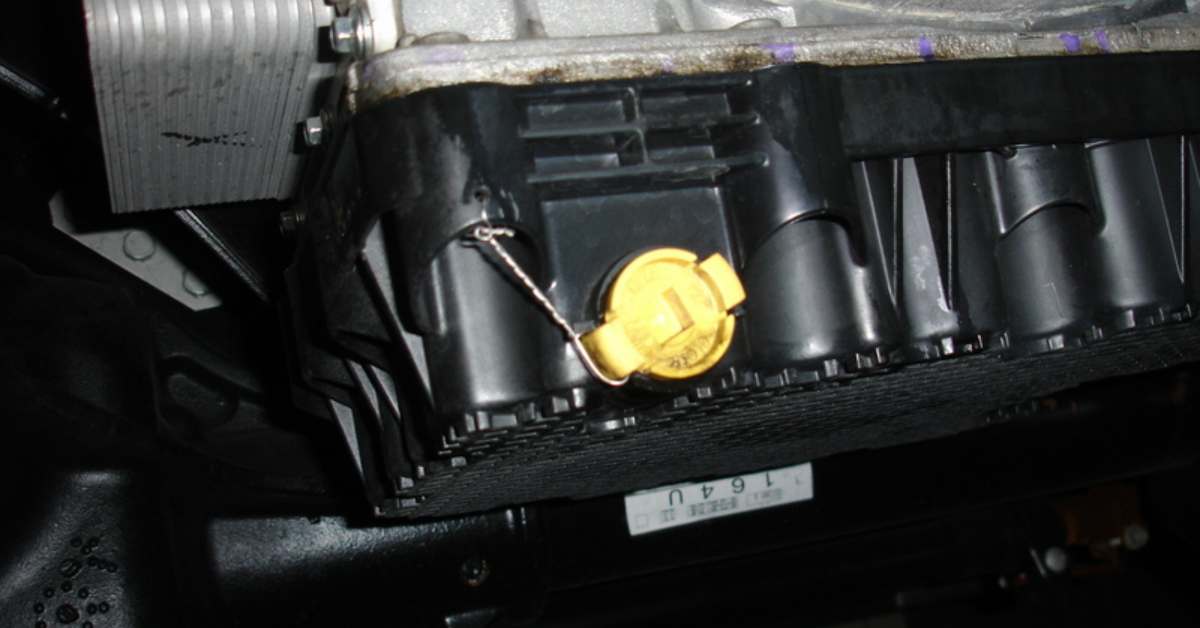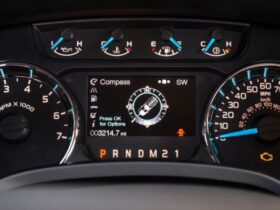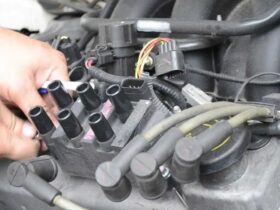Depending on the model, oil drain plugs in Ford vehicles are made from either plastic or metal. These drain plugs contain seals that effectively close drain openings and facilitate the removal of contaminated engine oil. These plugs allow old oil to be completely drained from the engine compartment, ensuring no residues are left behind.
Why Does Ford Use Plastic Drain Plugs?
Ford incorporates plastic oil drain plugs in several models due to their advantages, including quick draining, corrosion resistance, affordability, reusability, and ease of installation and removal. Models such as the F-150, F-450, F-550, Mustang, Fusion, and Edge Sport Utility are equipped with these plastic drain plugs. Ford introduced plastic drain plugs in 2015 to replace traditional metal plugs.
These plugs are made from high-quality, heat-resistant plastic. However, I avoid using plastic oil drain plugs in my truck due to their shorter lifespan compared to metal ones. They are prone to warping from prolonged exposure to overheated oil and can become brittle, leading to cracks and breakage.
Advantages of Plastic Oil Drain Plugs in Ford Vehicles
Due to their numerous benefits, Ford equips many of its vehicles with plastic oil drain plugs instead of metal ones. These plugs seal oil drains effectively, reducing oil seepage from engine components. However, proper installation is crucial, as incorrect placement can lead to leaks.
1. Quick Draining
To maintain engine efficiency, removing old, contaminated oil before adding fresh motor oil is essential. Plastic oil drain plugs enable faster drainage due to their compact size and unique design.
I once tested two Ford vehicles with different drain plug types. The truck equipped with a plastic drain plug drained oil significantly faster than the one with a metal plug. The plastic plug allows more surface area for efficient oil flushing. As a result, less time is required for oil changes, making vehicle maintenance more convenient.
2. Corrosion Resistance
Ford introduced plastic oil drain plugs in various models to combat corrosion issues associated with metal plugs. Unlike metal drain plugs, plastic plugs do not rust, which makes them easier to remove and install. Corrosion-resistant materials extend their lifespan and prevent degradation caused by oxidation. Since they are unaffected by humidity and water exposure, these plugs do not break or crack easily.
3. Cost-Effectiveness
Automakers, including Ford, strive to reduce manufacturing costs while maintaining vehicle quality. Replacing metal drain plugs with plastic ones helps achieve this goal by lowering production expenses. Plastic plugs are more affordable due to their chemical composition and manufacturing process, making them a cost-effective choice.
4. Reusability
Unlike some metal oil drain plugs that become unusable due to corrosion, plastic plugs can be reused multiple times. Their corrosion-resistant and durable material ensures they remain intact after repeated oil changes.
The absence of stripping and cracks further enhances their longevity, making them an environmentally friendly option. Proper installation and avoiding over-tightening can further extend their lifespan.
5. Easy Installation and Removal
Ford opted for plastic oil drain plugs in its trucks because they are easy to install and remove. The absence of corrosion prevents them from getting stuck, making the removal process hassle-free. These plugs feature built-in grips and a release mechanism, allowing users to remove them with their fingers instead of specialized tools.
Additionally, plastic plugs reduce reliance on professional mechanics, enabling vehicle owners to perform oil changes at home and save money. My friend installed a plastic drain plug in his truck within minutes without needing any tools.
6. Less Prone to Stripping
Unlike metal oil drain plugs, which are susceptible to stripping and can lead to oil leaks, plastic plugs are designed to withstand wear and tear. Metal plug stripping increases the risk of reduced engine lubrication, potentially causing damage. Plastic drain plugs are more resistant to stripping due to their flexible composition and absence of corrosion.
Furthermore, plastic’s insulating properties help prevent cracks or stripping due to electrical charges, ensuring a longer-lasting seal.
Which Ford Vehicles Have Plastic Oil Drain Plugs?
Not all Ford vehicles come with plastic oil drain plugs. Specific models, especially those manufactured after 2015, feature plastic plugs. These include:
- Ford F-Series trucks: F-150, F-250, F-350, F-450, and F-550.
- Ford cars: 2015 Ford Mustang, Fusion, and Edge.
- Lincoln models: 2015 and 2016 Lincoln MKX.
When Did Ford Start Using Plastic Drain Plugs?
Ford began using plastic oil drain plugs in 2015, with FEMCO manufacturing the plugs for models like the F-150 and Mustang. These yellow-colored plugs are made of durable plastic and are replacements for earlier OEM plugs, which were more prone to cracking and breaking. Ford vehicles produced between 2015 and 2021 commonly feature FEMCO-developed plastic drain plugs. Unlike OEM plugs, FEMCO plugs do not require frequent replacement.
Most Ford F-Series trucks come equipped with these specialized plastic plugs, reducing the need for frequent replacements during routine maintenance.
Are Plastic Oil Drain Plugs Reusable?
Yes, plastic oil drain plugs are reusable due to their corrosion-resistant properties. Unlike metal plugs that rust over time, plastic plugs remain intact and functional even after multiple oil changes. However, replacement becomes necessary if signs of wear appear, such as:
- Engine oil leaks from the drain plug seals.
- Noticeable cracks, warping, or deformations.
- Damaged O-rings contributing to leaks.
Although plastic drain plugs can last through several oil changes, some Ford owners prefer replacing them after every two oil changes to minimize leakage risks. Regular inspection of O-rings is also recommended, as they may deteriorate faster than the plug itself.
Plastic oil drain plugs offer numerous advantages, including faster oil drainage, corrosion resistance, affordability, reusability, and ease of installation. Ford introduced these plugs 2015 to improve vehicle maintenance efficiency while lowering production costs. While they are more prone to wear and warping than metal plugs, their benefits often outweigh the drawbacks, making them a practical choice for many Ford truck and car owners.






Leave a Reply
View Comments